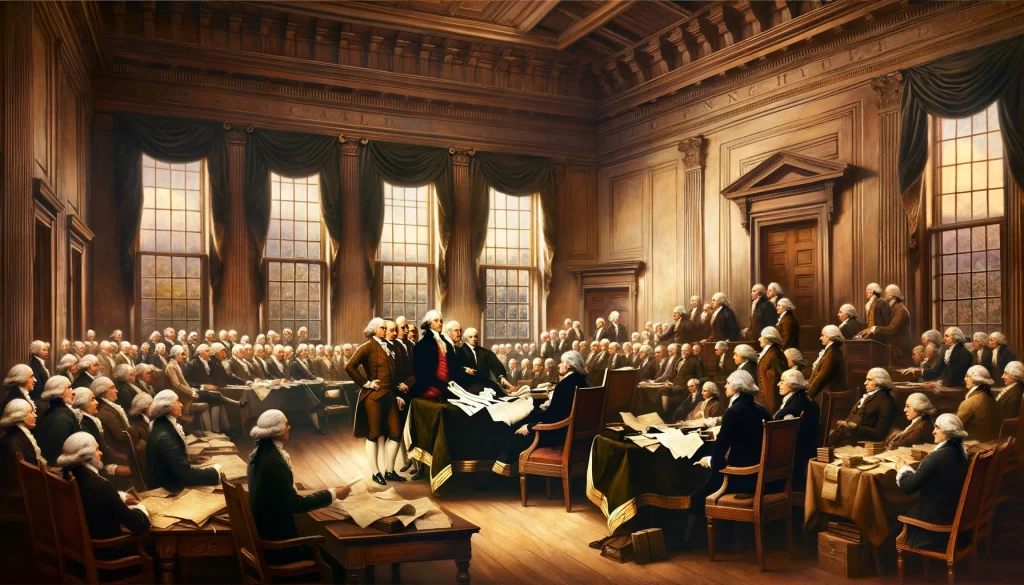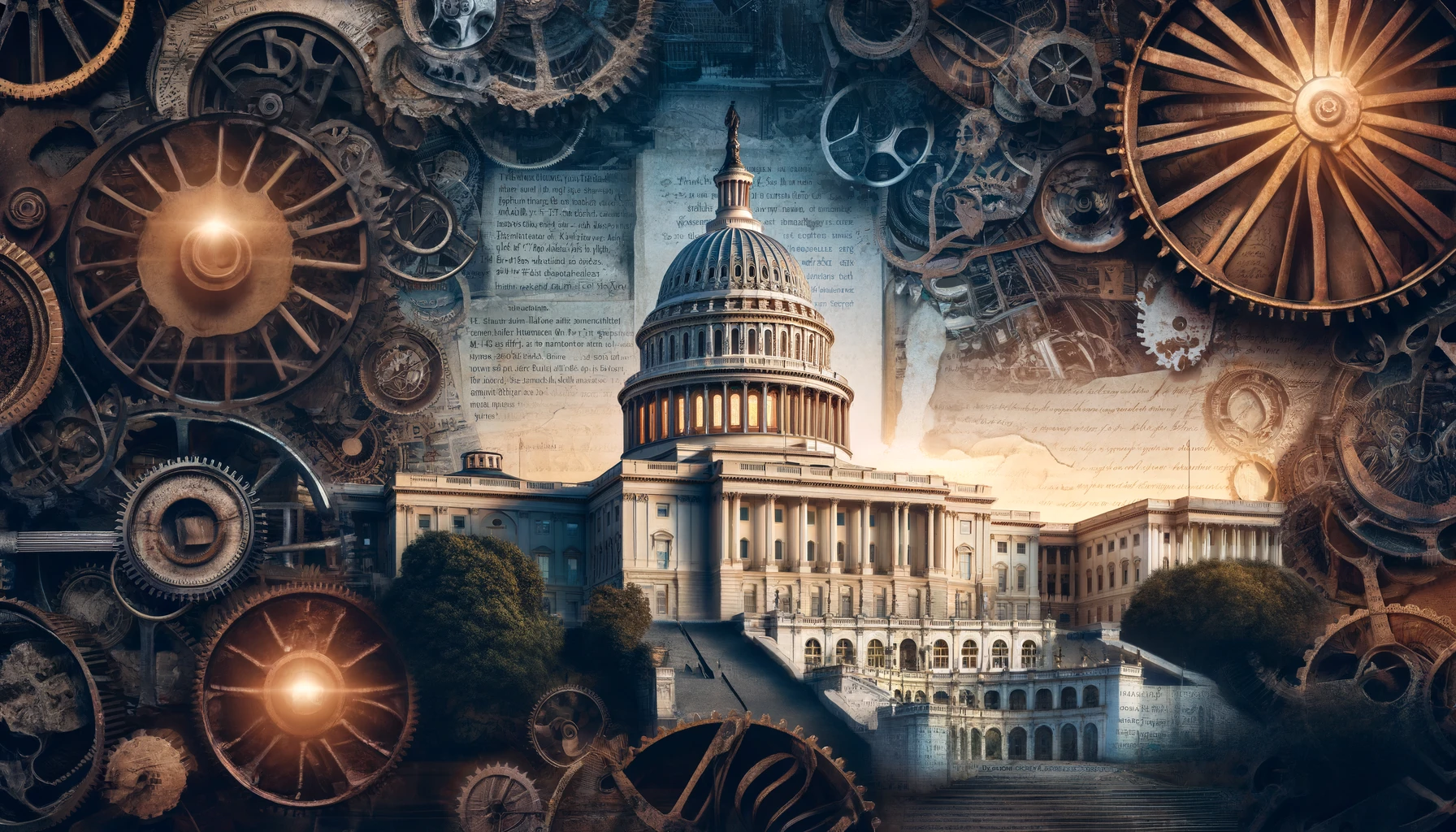In a democracy, one of the central challenges is balancing majority rule with the protection of minority rights. This issue was first confronted by the Founding Fathers in 1787. At that time, the minority they sought to protect were white male landowners. Journalist Ari Berman discusses this historical struggle in his new book, Minority Rule.
Berman explains that many of the founders were distrustful of the public’s ability to directly elect a president. This skepticism led them to establish a system where electors, rather than the general populace, would choose the president. He argues that this system was designed to keep power within a small, elite group. Today, institutions such as the Electoral College and the Senate, which were intended to act as checks on the majority, still serve to concentrate power away from the broader populace.
In the first presidential election in 1789, only a select few could vote, and even then, some states only allowed these voters to select electors, not the candidates themselves. Despite expansions in voting rights over the years, Berman points out that the democratic process remains deeply flawed. He highlights the presidential elections of 2000 and 2016 as examples where the candidates who won the popular vote did not win the electoral vote. Additionally, he criticizes the Constitution’s requirement for each state to have two senators, regardless of its population. This rule gives disproportionate power to smaller, less diverse, and more conservative states in the Senate.
Berman expresses concern about the current political climate, where he sees a conservative, white minority attempting to diminish the influence of a diverse, multiracial majority. He views this as a significant threat to American democracy.
Reflecting on the Constitution, Berman suggests that while it is often revered almost religiously, it would be more beneficial to recognize both its strengths and its flaws. He notes that although America has become more democratic over time, certain constitutional features have simultaneously grown more undemocratic.

The Electoral College, for example, was created because the founders feared that an uninformed public would make poor choices, or that the largest or free states would dominate elections, particularly to the disadvantage of Southern states. Smaller and slave-holding states demanded protections, which they received through the Electoral College. This system was intended to safeguard the interests of these smaller groups.
During the Constitutional Convention, there was a significant dispute over Senate representation. James Madison and other framers wanted representation based on population, which would benefit larger states like Virginia over smaller ones like Delaware. However, smaller states resisted. The attorney general of Delaware even threatened to align with foreign powers if smaller states did not receive equal representation in the Senate. This confrontation forced the larger states to compromise, allowing smaller states to have disproportionate influence in the Senate.
Madison was particularly concerned that this compromise would enable a minority to control the Senate, a situation he believed would worsen as the nation expanded. His fears seem prescient today as the demographic and political gap between larger and smaller states has widened significantly. Berman points out that by 2040, 70% of Americans will live in just 15 states, which will only have 30 senators, while the remaining 30% of the population will control 70 senators. This imbalance, Berman argues, is making the Senate increasingly undemocratic.
Berman also criticizes conservatives who selectively quote the framers to support their political views while ignoring the framers’ concerns about the very institutions they created. He emphasizes that even Madison, a key architect of the Constitution, was deeply worried about the long-term implications of the Senate’s structure.
This article is based on the following article:

Background Information
Understanding these foundational elements will help readers comprehend the complexities of the U.S. political system as discussed in Ari Berman’s analysis of minority rule and the design of American democracy. These topics not only provide a historical perspective but also highlight ongoing challenges and debates within the U.S. democratic framework.
1. Founding Fathers and the Constitutional Convention
The Founding Fathers were a group of American leaders who united the thirteen colonies, fought the American Revolution, and formed the United States. In 1787, they gathered at the Constitutional Convention in Philadelphia to create the U.S. Constitution, which established the government’s framework and fundamental laws. Key figures included George Washington, James Madison, and Alexander Hamilton. The discussions at the Convention focused on balancing the needs of large and small states, free and slave states, and how to implement a fair system of government.
2. Majority Rule vs. Minority Rights
Majority rule is a fundamental principle of democracy, meaning that the decision of a majority of the people is chosen. However, this principle can threaten the rights of minorities. Therefore, democracies often incorporate protections for minority groups to ensure they are not oppressed by the majority, balancing equality and liberty for all citizens.
3. Electoral College
The Electoral College is a unique system for electing the President of the United States. It was established to compromise between election of the President by a vote in Congress and election by a popular vote of qualified citizens. The College consists of 538 electors, and a majority of 270 electoral votes is required to elect the President. This system can lead to a candidate winning the presidency without having the majority of the popular vote, which has occurred in several elections, including those of 2000 and 2016.
4. U.S. Senate and Representation
The U.S. Senate is one of the two houses of the U.S. Congress, with each state represented by two senators regardless of its population. This arrangement was part of the Great Compromise to balance the power between large and small states. The House of Representatives, the other house, is based on population. The equal representation in the Senate was meant to protect smaller states from being overpowered by larger states.
5. Expansion of Voting Rights
Initially, the right to vote in the United States was limited to white male property owners. Over time, suffrage expanded through constitutional amendments and legislative changes: the 15th Amendment (1870) prohibited vote denial based on race, color, or previous condition of servitude; the 19th Amendment (1920) granted women the right to vote; the 24th Amendment (1964) abolished poll taxes; and the Voting Rights Act of 1965 aimed to overcome legal barriers at the state and local levels that prevented African Americans from exercising their right to vote.
6. Demographic Changes and Political Power
The United States has undergone significant demographic changes, becoming more diverse in terms of race, ethnicity, and cultural background. These changes have political implications, particularly in how power is distributed and represented in government institutions like the Senate.

Debate/Essay Questions
- Is the Electoral College still relevant today?
- Do you agree that minority rule is a significant threat to American democracy?
Please subscribe to Insight Fortnight, our biweekly newsletter!
